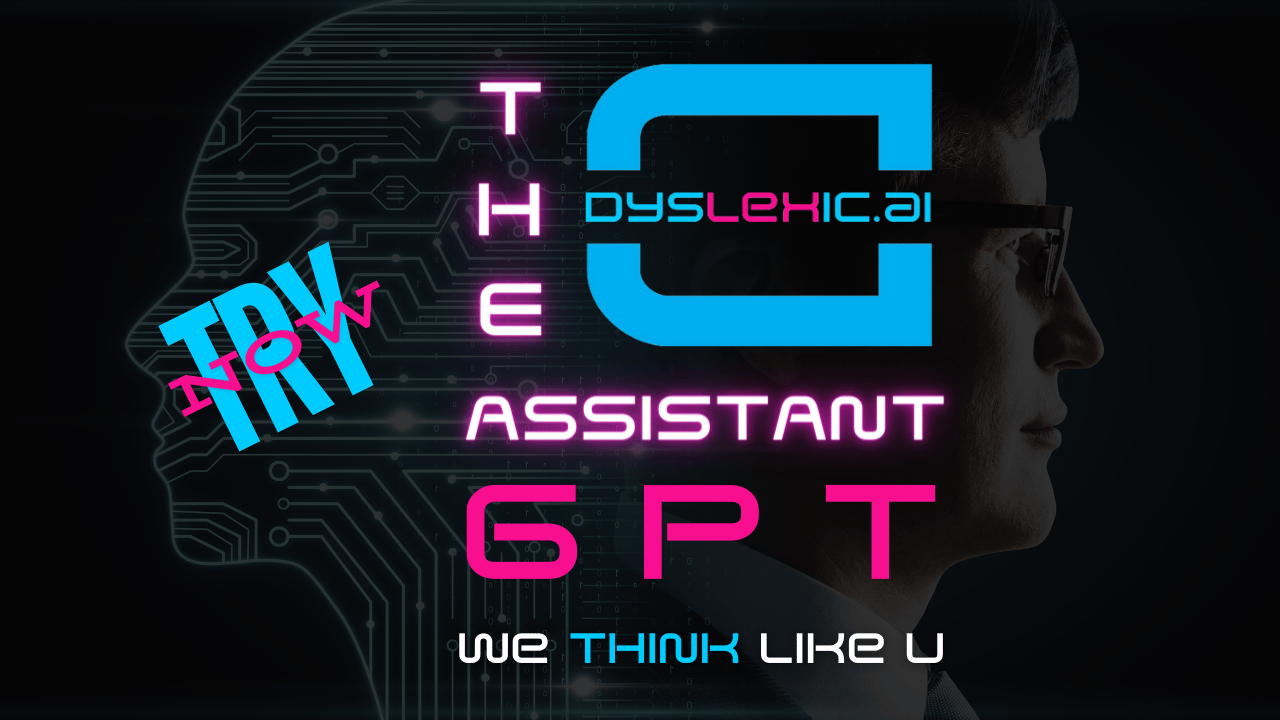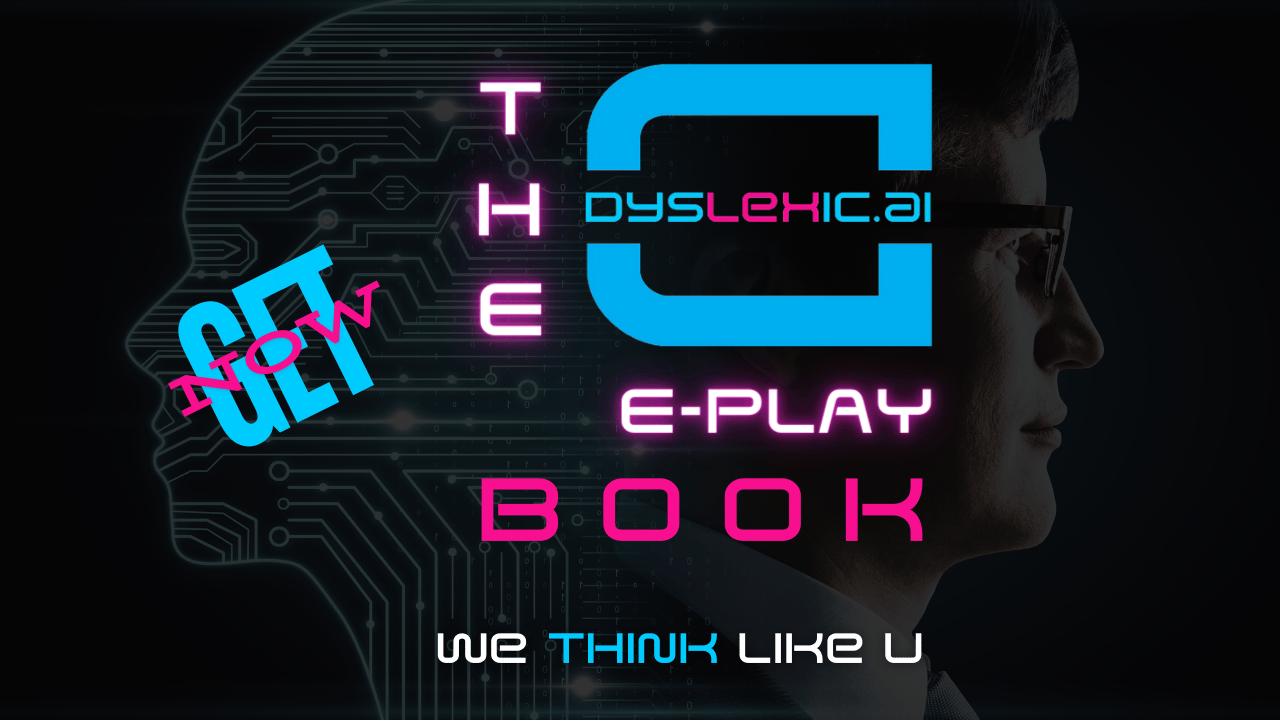- DYSLEXIC AI
- Posts
- Newsletter 282: Exciting AI Updates and Behind-the-Scenes Progress
Newsletter 282: Exciting AI Updates and Behind-the-Scenes Progress
🧠 AI and Dyslexic Thinking: Breaking New Ground in How We Process Information

Good morning, fellow lateral thinkers!
As I sip my morning coffee (my second cup, let’s be honest), I’m filled with excitement about the updates I have to share with you. It’s been a while since my last newsletter, but that’s only because we’ve been hard at work behind the scenes on projects that could revolutionize how dyslexic thinkers interact with AI.
Let me take you on a journey through what we’ve been up to, the incredible developments in the AI space, and what’s on the horizon for 2025.
The Journey Behind the Scenes
While my newsletters have been quieter lately, the work behind the scenes has been anything but. Our focus has been on transformative projects, including:
Building a Dyslexic Language Model: We’re pushing forward with a model that not only aligns with how we think but empowers us to think even bigger.
Expanding the Agency Model: We’re creating tools and frameworks to support businesses of all sizes with tailored AI solutions.
Developing Cognitive Architecture Frameworks: These frameworks are designed to integrate creative, lateral thinking with structured, linear problem-solving.
Designing Comprehensive AI Solutions: Our goal is to ensure AI doesn’t just work for us but thinks like us.
The AI World Keeps Moving
In the past few weeks, the AI world has been buzzing with innovation. Major players like OpenAI, Anthropic, Google, Meta, and Microsoft have been unveiling tools and updates that promise to reshape how we interact with technology. For dyslexic thinkers, these advancements could open up entirely new ways of working, creating, and solving problems.
OpenAI’s Operator and GPT-4 Turbo
OpenAI recently announced exciting updates, including the Operator AI Agent slated for launch in 2025. This agent will allow for real-time task automation directly on your computer. Coupled with GPT-4 Turbo, which offers faster and more cost-efficient access to advanced capabilities, this marks a step forward in personalized and practical AI usage.
Why This Matters for Dyslexic Thinkers:
Operator AI could handle repetitive tasks like formatting documents or managing email inboxes, freeing dyslexic professionals to focus on creative and strategic thinking.
Faster processing times and more affordable access mean these tools are becoming more accessible to a wider audience.
👉 Learn more about Operator AI
Anthropic’s Claude 3.5 Sonnet
Anthropic has taken a leap forward with Claude 3.5 Sonnet, emphasizing more intuitive interactions and robust developer support. This tool allows users to engage in deep, thoughtful conversations while providing superior coding and automation capabilities.
Why This Matters for Dyslexic Thinkers:
For dyslexic developers, Claude 3.5 offers a supportive partner for coding, debugging, and ideation, making workflows more intuitive.
Its conversational style resonates with how dyslexic thinkers process information—through dialogue and exploration rather than rigid structures.
👉 Explore Claude 3.5
Google’s ’s Gemini 2.0 and Whisk AI
Google’s Gemini 2.0 Flash and Whisk AI are setting a new standard for visual and multimodal processing. Gemini’s ability to process text, images, and video simultaneously offers a breakthrough for creative professionals, while Whisk focuses on real-time collaboration tools.
Why This Matters for Dyslexic Thinkers:
Gemini’s visual-first approach is a game-changer for those who think in pictures, enabling seamless integration of text and imagery for tasks like presentations or brainstorming.
Whisk’s collaborative features can help dyslexic teams communicate and execute ideas more effectively.
👉 Discover Gemini 2.0
Meta’s Enhanced AI Assistant and Video Capabilities
Meta’s newest AI tools focus on integrating conversational assistants across platforms like WhatsApp, Instagram, and Messenger. These updates also include enhanced generative video tools, allowing users to create high-quality video content with minimal effort.
Why This Matters for Dyslexic Thinkers:
Meta’s tools simplify content creation, which can be daunting for dyslexic professionals. Imagine creating video tutorials or social media content without needing extensive editing skills.
Conversational AI assistants could act as personal organizers, helping to manage schedules, messages, and tasks more efficiently.
👉 Check out Meta's updates
Microsoft’s Copilot and Azure OpenAI Integration
Microsoft continues to innovate with Copilot, now integrated across its business tools and services like Azure. This AI assistant focuses on automating workflows, analyzing complex data, and streamlining communication.
Why This Matters for Dyslexic Thinkers:
Copilot can handle tedious tasks like drafting reports or analyzing spreadsheets, giving dyslexic users more bandwidth for strategic and creative projects.
Its integration with Microsoft Teams allows for smoother collaboration, a boon for neurodivergent professionals who thrive on dynamic, visual communication.
👉 Explore Microsoft’s tools
Apple’s Advances in Voice Accessibility
Apple is doubling down on voice-driven features with their latest iOS updates, including dictation improvements and enhanced Voice Control for accessibility. These updates are complemented by the introduction of AI-driven Assistive Touch for better navigation.
Why This Matters for Dyslexic Thinkers:
Voice-to-text is already a lifeline for many dyslexic individuals, and Apple’s updates make this tool more accurate and reliable.
Assistive Touch enhances accessibility for dyslexic users who prefer voice or tactile input over traditional navigation method.
👉 Read about Apple’s accessibility updates
Adobe’s Firefly 3 and AI-Powered Creative Tools
Adobe has launched Firefly 3, introducing AI-driven capabilities like generative fill, text-to-image, and automatic design assistance. These tools enable even non-designers to create professional-grade visuals.
Why This Matters for Dyslexic Thinkers:
For those with strong visual imaginations but limited technical design skills, Firefly opens new doors for self-expression and creativity.
Dyslexic entrepreneurs can use these tools to create polished marketing materials without needing a full design team.
👉 Explore Firefly 3
Amazon’s Bedrock AI and Business Tools
Amazon’s Bedrock AI aims to make generative AI accessible for businesses, focusing on fine-tuning models to suit specific industries and needs. Their tools are built to integrate seamlessly into existing workflows.
Why This Matters for Dyslexic Thinkers:
Bedrock’s customization options allow for AI solutions that align closely with individual cognitive styles, making it easier for dyslexic thinkers to adopt and excel with these tools.
Integration into Amazon Web Services ensures scalability for businesses of all sizes, empowering neurodivergent entrepreneurs.
👉 Learn about Bedrock AI
OpenAI’s Collaboration with Canva
The partnership between OpenAI and Canva now brings AI-powered design tools to one of the most user-friendly platforms. Features like instant graphic generation and layout suggestions enhance creativity and productivity.
Why This Matters for Dyslexic Thinkers:
Canva’s AI tools make it easier to turn big ideas into visually appealing designs, ideal for brainstorming and storytelling.
Dyslexic professionals can bypass technical hurdles and focus on expressing their vision.
👉 Discover Canva's AI
Why These Advancements Matter
These breakthroughs aren’t just technical marvels; they represent real opportunities for dyslexic thinkers to thrive. From voice-driven accessibility to visual-first tools, the AI revolution is becoming increasingly aligned with how we think and work.
By keeping an eye on these trends, we’re not just adapting to the future—we’re helping to shape it.
Looking Ahead to 2025: Building the Future Together
As we approach 2025, I’m filled with anticipation for the possibilities ahead. Our mission isn’t just about leveraging AI—it’s about shaping it to reflect and amplify the strengths of dyslexic and neurodivergent thinkers.
Key Projects Taking Shape
Dyslexic Language Model Development
We’re transforming the dream of a specialized language model into reality. This project is the cornerstone of how we’ll redefine AI for neurodivergent thinkers.
Agency Model Expansion
Our agency continues to grow, offering scalable AI solutions that empower businesses to embrace cognitive diversity.
Cognitive Architecture Frameworks
These frameworks are setting new standards, blending right-brain creativity with left-brain logic to redefine problem-solving.
Comprehensive AI Solutions
We’re ensuring that AI tools aren’t just helpful—they’re built to think like we do, aligning with our natural processes and enhancing our unique strengths.
Why This Matters
This isn’t just about tech advancements; it’s about creating a future where AI enhances our natural thinking patterns. For dyslexic thinkers, this means tools that celebrate creativity, make sense of complexity, and bridge gaps in traditional workflows.
A Personal Note
I want to express my gratitude for your patience as we’ve focused intensely on these foundational projects. Building something meaningful often means stepping back, recalibrating, and dedicating time to what truly matters. These updates are just the beginning, and I can’t wait to show you what’s next.
Further Reading and Resources
AI Aggregates but Dyslexia Innovates
The Power of Dyslexic Thinking and AI
Future-Proofing Your Career with Dyslexic Thinking
Thank you for being part of this journey. Your unique perspectives and ideas drive the future of AI in ways that inspire me every day.
We think like you,
Matt Ivey
Founder, Dyslexic AI
P.S. Stay tuned for exciting updates, and don’t hesitate to reach out if you want to be part of shaping this future with us!

What We Learned Today (TL;DR for Our Fellow Skimmers)
Major AI platforms are making strides in intuitive, neurodivergent-friendly tools.
Visual thinking is finally getting the spotlight in AI.
Business tools are adapting to diverse cognitive styles.
We’re creating revolutionary solutions behind the scenes.
2025 promises exciting breakthroughs for dyslexic thinkers in tech.
What did you think about today's edition? |
What should the next deep dive be about? |
|
|
|






Reply